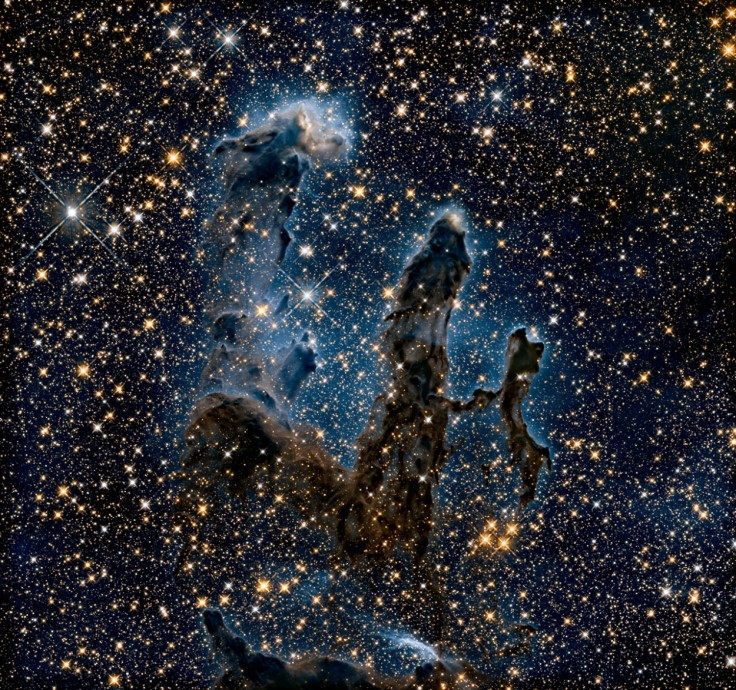
An updated image of the stunning 'Pillars of Creation' was captured by NASA in this brand-new infrared photograph. The original picture was taken by the Hubble Telescope in 1995 and showed an array of dazzling colors mixed and intertwined in a great pattern. The latest reveals have taught what the star-forming matter in a whole new look due to advancements in technology.
The 'Pillars of Creation' are a collection of gas and dust found in the Eagle Nebula, somewhere around 6,000 light-years away. An assortment of infant stars could be seen within its surroundings. Their beauty garnered them a place as landmarks for the Milky Way galaxy.
The image was made possible with the use of invisible infrared light. The cosmic masterpiece spans a massive five light-years (3.5 times the size of our solar system!) shows just how it prepared the stage for the development of stars.
Who made it possible?
A Twitter post from NASA revealing the newly captured image is shown below, along with the caption that it has never been seen this way before.
The organization stated that the seed of a star called 'protostar' often starts from a multitude of dense pockets of hydrogen gas and dust that form in the singular, gravitationally-dense locations that were heated up under the weight of the accumulation,
As a protostar continues to accumulate mass and if the core reaches ample temperature to jumpstart a nuclear reaction leads to the formation of a brand-new star that joins the family in the far reaches of the galaxies.
The image shows how the Pillars seem to fade away to reveal a vast curtain of newly-formed stars in the clouds.
The tip of the most towering pillar is home to the highest activity, where a shine of blue radiation develop as budding stars cool down below to retain their elongated shape.
Paul Scowen, as astronomer over at NASA, said as the stars in the tips of the pillars continue to grow, they gain more radiation, which gradually destroys the gas clouds that envelop them.
In 2015, the astronomer shared these pillars are ionized, which is a process where electrons are rid of their atoms and heated by the radiation coming from massive stars. He al noted the powerful winds of charged particles produced by the stars is smoothening out their top-most surfaces.
Part of the original 1995 Hubble team that explored the Eagle Nebula, Scowen, also took part in the capture of the iconic new photograph. The difference of the pictures shows the grand scheme of things and how space changes ever so constantly for things never to look the same again.
Hubble turns 30!
This new update comes as a celebration to the Hubble Telescope's 30 years in service, continually monitoring and capturing amazing sceneries and findings.
With this event, NASA has shared with people around the world what their one-of-a-kind telescope has seen on their birthdays. Go to this website and input your birth month and day, and the tool will show you a photo that Hubble has captured on that day on a random year.
Being as large as a school bus, Hubble was initially released in 1990 and has made a whopping 1.4 million observations of the galaxies and cosmic entities around the universe.









